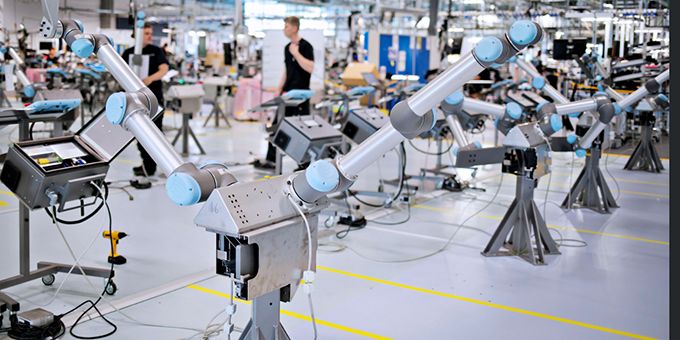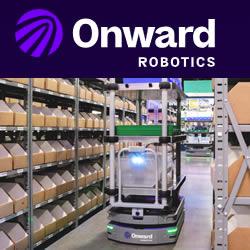Universal Robots' VP of Operations and Supply Chain, Martin Kjærbo shares with us his thoughts on how Universal Robots is managing through the pandemic as well as insights into what the future of Robotics and Automation may be.
 Business Perspectives and the Impacts of COVID-19 - Q&A with Universal Robots
Business Perspectives and the Impacts of COVID-19 - Q&A with Universal Robots

Q&A with VP of Operations and Supply Chain, Martin Kjærbo | Universal Robots
We wanted to shed light on how Universal Robots as a manufacturer is handling the COVID-19 pandemic. In this Q&A, Martin Kjærbo, UR’s VP of Operations and Supply Chain, discusses the company’s approach, new challenges and how the crisis will shape Universal Robots going forward.
Tell us how you run your operations today vs. before the pandemic:
We started to closely follow the developments in China in early January and began to prepare for the spread of the virus to possibly impact the rest of the world markets we operate in. When stay-at-home orders emerged in numerous countries, we were prepared to adapt quickly.
Right now, all of our employees not directly involved in the physical production of our robots work from home. This means all admin, sales, management and R&D groups work remotely and stay in contact during daily, online meetings—this is the case both at our headquarters in Denmark and at our 27 offices around the world.
Many of our R&D engineers have been able to set up labs in their own garages. We sent robots home with them and it’s a setup that has actually worked surprisingly well, especially since they are also able to use and collaborate through some of the UR+ simulation software tools available. It has been a great experience to see just how quickly employees have adjusted.
Engineers at Universal Robots have been able to take the UR cobots home with them to continue research and development remotely
How has your supply chain been impacted and what have you done to mitigate this?
The COVID-19 outbreak has caused a major shakeup, no doubt about it. This is a time when the robustness of our supply chain is seriously challenged. Fortunately, we already had a dual-source supply chain in place, which meant that when China started shutting down, we weren’t as vulnerable and had options to get the same parts elsewhere. With China now opening back up and much of Europe still shut down, we’re seeing that same dual-sourcing strategy work the other way around. As a result, we have not had any disruptions to operations and our production capacity remains intact. Getting to this point, redirecting the supply chain, has definitely taken an unfathomable amount of agility and due diligence.
We are constantly trying to look further ahead now, getting purchase orders out for raw material earlier, and closely examining not just our own suppliers but also taking a look at their second-, third- and fourth-tier suppliers to make sure they can deliver as well. As a result, we have not had to re-engineer any of our robot models.
.png) Before joining Universal Robots, Martin Kjærbo held management positions within logistics/supply chain and engineering departments at other Danish companies well-known in the global market such as pump manufacturer Grundfos and the wind turbine company Vestas.
Before joining Universal Robots, Martin Kjærbo held management positions within logistics/supply chain and engineering departments at other Danish companies well-known in the global market such as pump manufacturer Grundfos and the wind turbine company Vestas.
Did you have to restructure your production line to minimize contagion risks or provide personal protection equipment (PPE) to protect employees?
On our production lines in Denmark, where all manufacturing of our robots is carried out, we have changed from one- to two-shift operation to physically spread our workforce out more. We adhere to the recommended two-meter (six feet) distancing regulations in between people, and have added hand sanitation stations basically everywhere you look. All staff members also wear gloves on the production lines. Wearing face masks is not part of the official recommendations in Denmark at this point, but should this become necessary, we do have masks ready to dispense.
Spreading the workforce out over two shifts also means less people in the cafeteria at the same time. At headquarters, we ask production staff to break in small groups, all meals are pre-plated with disposable cutlery, the buffet is gone to avoid cross-contamination. To underscore the social distancing during breaks as well, we removed half of the chairs in the cafeteria.
How do you communicate necessary production changes to your workforce, and how are they handling it?
We have had an amazing reaction from our employees; there’s definitely a heightened sense that we’re all in this together. There’s been an incredible amount of helpfulness, they all want to see our company through this. Many of the production adjustments have come directly from employees, suggesting how we can do this work task more efficiently, how do we clean this item, new ways to meet regulations, etc.
Going to a two-shift operation went very smoothly. Many of our employees who now have their children at home during the day welcomed working at night so they are able to spend more of the daytime hours with their kids.
Are you relying more on automation now than before?
We take our own medicine, so to say. On our assembly line, we have UR cobots assembling UR cobots. In a time like this, we of course closely examine each and every production task to see where we can alleviate employees and have the cobots take over even more tasks, adding even more automation on the line. That’s an ongoing process that has been accelerated by the pandemic. I think a lot of our customers are currently going through those same progressions, as they start realizing how cobots can help free up personnel.
Adding cobots to a production line has long helped many UR customers address labor shortages, essentially by spreading out employees and have them collaborate with cobots as seen here at SHAD in Spain where cobots work in tandem with operators in the assembly of motorcycle accessories.
How do you make sure your products reach the end customers on time?
Before the borders started shutting down, we began shipping our finished goods stock out to warehouses in the U.S., Malaysia, China and the Netherlands, as we anticipated the shutdown to impact freight as well. This has fortunately not happened to the extent that we feared, but there’s been quite a few logistics headaches as flights canceled. We recently had a large order on a flight out of Copenhagen cancel that we transported to Stockholm by truck and then were able to get on a plane out of there instead. There are issues like this that we constantly have to maneuver, but so far, we have not had any delays in getting the robots out to customers on time.
At our Danish headquarters, we keep the robots in two different warehouses, so in case there’s a coronavirus outbreak from one warehouse, we can ship from the other. This has fortunately not happened.
How do you think this crisis will shape your company going forward? What are some of the lessons learned?
I think one of the most significant lessons is the importance of dual-sourcing your supply chain and staying in very close contact with each and every supplier. I cannot emphasize this enough. We have an availability forecast on every single part number, we know our weak parts and make sure there are always back-up plans in place to secure those.
Will the way you operate your business change in the long term as well?
I think we will emerge from this forever changed. On the bright side, this has been a big wake-up call that has spurred an amazing amount of production adaptability and increased focus on securing healthy work environments. Our new sanitation stations are not going anywhere, even when the virus subsides.
On the other hand, it saddens me that the interpersonal relations will most likely not go back to the way we used to interact: the handshake, the friendly hug. I’m not sure when we will be able to communicate that way again and that saddens me. Hopefully one day, this will be possible again.
The content & opinions in this article are the author’s and do not necessarily represent the views of RoboticsTomorrow
Featured Product

